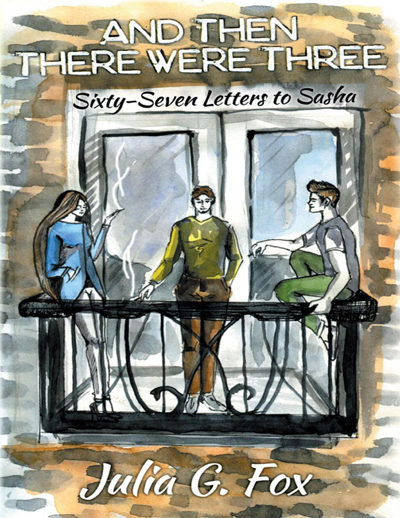“And Then There Were Three: 67 Letters to Sasha” written by Julia Fox, is a stunning look at polyamorous relationships from the perspective of the only female in the group. The author manages to convey deep, relatable emotion mixed with a glimpse of the historical truth of Russia’s culture of intolerance for the LGBT community.
Very much of the book is poetic and by no mistake. Julie has “always considered herself “more of a poet than a fiction writer, more of a short-distance runner, really.” The use of the repetition ‘Dear Sasha’ creates a nostalgic feeling and is used to begin and end each letter. In documenting her relationship with letters, Julie Fox is able to transform a very real and personal longing into a beautiful, despite painful, read.
The reader is left with a deep connection to both Julie and Sasha from the intense character development of Sasha and the outpouring of the emotion of the author. When asked about her desire for Sasha to ever read these letters, Julie says that “the desire to tell him everything that was going on in my life and in my head was overwhelming. I never really hoped that he would read these letters, though. To me, writing to him was a way of looking back at our relationship and trying to make sense of it.”
Despite each chapter being written in the form of a letter, the storyline is not lost or disjointed. In fact, the writing style allows the memories to flow in a way that makes the reader feel as if they are remembering each memory themselves instead of just reading them. This book is a roller coaster of emotion, capturing the happy and the sad – the reality of all relationships. The last few entries are so sorrowful and full of mourning, with the true depth of loss captured, and it leaves a feeling of real, tangible loss that most people can relate to.
The last letter is, and feels, exceptionally final as if the reader closing the page of the book is mirroring the author closing that chapter in her life. Julie explains that her and her partner George had always had excellent communication pathways opened between them, discussing all kinds of issues, including their past relationships with previous partners, as well as ongoing issues in their current relationship with each other. “The self-growth and maturity we have achieved through negotiating jealousy, insecurity, possessiveness, and other issues common to polyamorous relationships, as well as discovering compersion, which is the feeling of joy you are experiencing when you see your loved one love another, brought us closer than we have ever been,” Julie says of Sasha’s impact on their life. For her, the end of that chapter did not ruin her current ongoing story. She has instead created a highly relatable and personal look into polyamory, and the struggle of finding a balance in her life.






